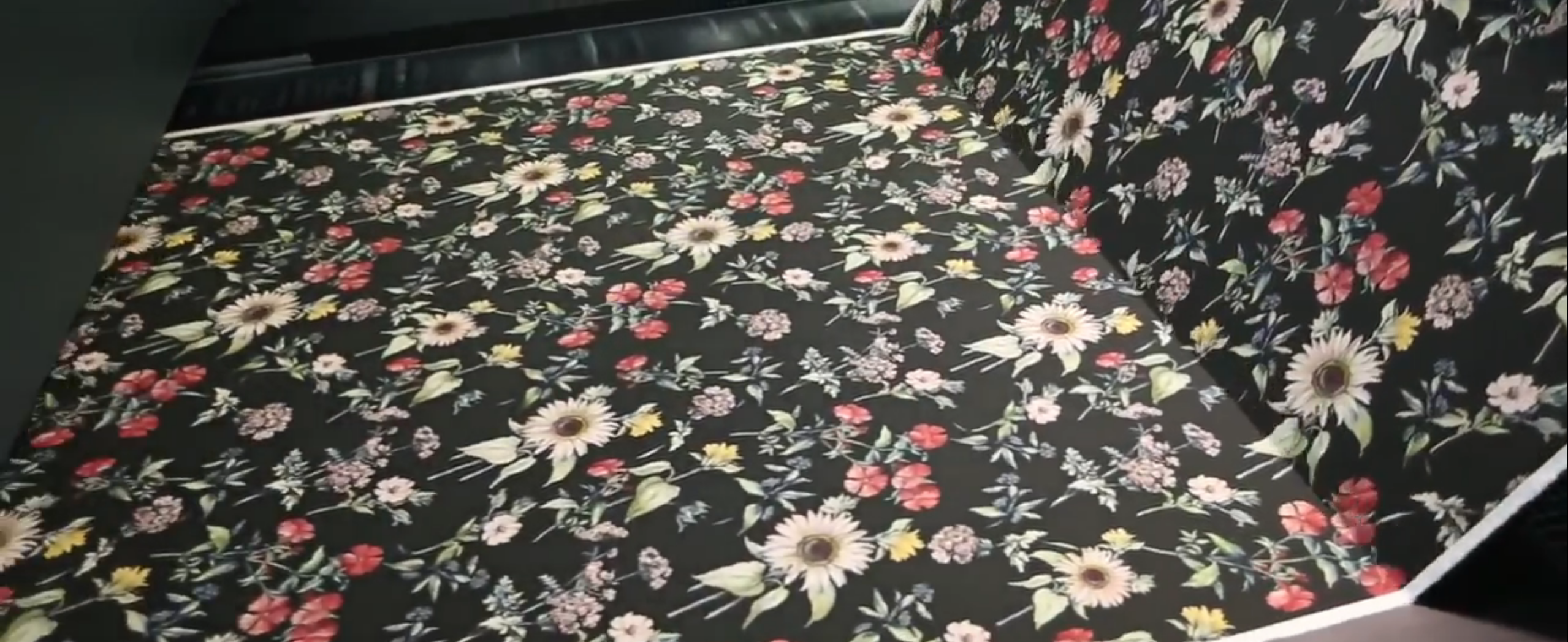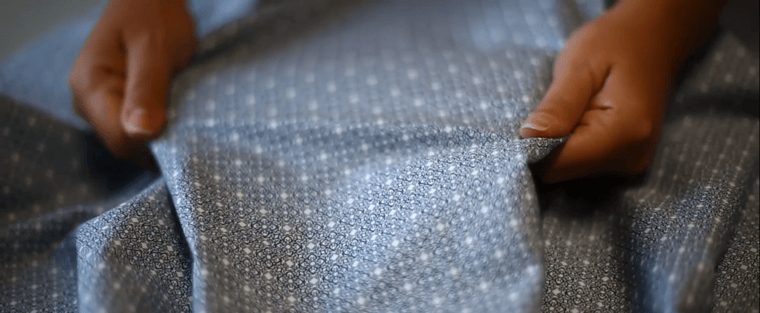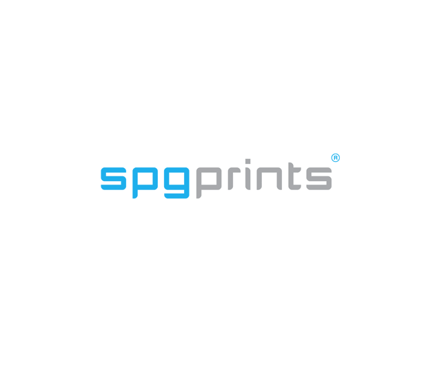Direct disperse printing
In direct disperse printing you print the ink directly onto the fabric. Before printing, the fabric is pre-treated with chemicals to make sure the ink will be bound to the fabric during the steaming process. After the ink has been printed onto the fabric, the fabric goes through the dryer to make sure the water is taken out and the dye stays on the fabric.
However, this does not mean the ink already sticks to the fabric. To make sure that happens, the fabric is being steamed. This process will initiate a chemical reaction that results in the fabric absorbing the ink and locking the color inside the fibers.
Advantages:
- Direct disperse (same like direct reactive and acid printing), provides you with great fastnesses as required by industry standards.
Disadvantages:
- The steaming process takes up quite some time and a lot of energy and water.
- On top of that, the steamer will take up a large amount of space. Your steamer needs to be long enough that the fabric can stay in it for several minutes. When you can print 300 meters per hour, it means that your steamer should be long enough that it can steam 300 meters of fabric for a duration of several minutes.
- You need to invest in both a steamer and a washer which increases the investment you’ll have to make.
- Since you’re printing directly onto the fabric you need a printer with a conveyer belt that has a special thermoplastic layer attached to it. This is a type of glue that will stick the fabric to the conveyer belt so it does not move during the printing process. However, this conveyer belt is quite costly and will, therefore, add to the total investment.
Paper digital sublimation printing
The most common way to do sublimation printing is paper sublimation printing. You print the design on paper, place the paper onto the fabric and feed it through a calendar. In the calendar, the paper and the fabric are heated and pressed in between two large rolls. The high pressure and the temperature cause the ink to go instantly from solid state into gas (sublimate) which will be absorbed by the fabric. As soon as the fabric comes out of the machine, the gas coagulates into the fiber.
Advantages:
- No steamer or washing machine is needed for sublimation printing, only a calendar. For this reason, this technique is less environmentally damaging, easier and cheaper than other printing methods.
- On top of that, sublimation printing can be done on a digital printing machine which means you can print large quantities at a faster rate.
- Your printer does not need to have a thermoplastic layer since it only has to transport paper. Any basic printer is capable of doing that. Again, that brings down the initial investment of sublimation printing.
- Although sublimation inks are more expensive, the ink usage per square meter is 20-30% lower than other printing methods.
Disadvantages:
- You need paper which is later thrown away. Besides the cost of the paper this negatively influences the sustainable image of sublimation printing.
- Sublimation printing can only be done on polyester.
- With sublimation printing, the ink will only stick to one side of the fiber. That means that the print will only be visible on one side of the fabric. If the fabric is later washed in a ‘harsh’ washing machine, you run the risk that the yarn twists and the white, unprinted side of the fabric, rotates to the top. This creates a ‘washed out’ impression of the printed fabric.
- Lower fastnesses (lightfastness, colorfastness, washfastness and rub fastness) than direct printing methods like reactive, acid or direct disperse printing.

Direct sublimation printing
In recent years, a new printing method evolved: direct sublimation printing. This printing method is a combination of sublimation and direct disperse printing. Direct sublimation printing means that you are printing the same low-energy sublimation inks (inks that sublimate very easily) directly onto the fabric — without using paper — and subsequently finish it in the calendar.
The advantage of this new printing method is that the ink can penetrate the fiber in a better way. Because of this, the fastnesses of the printed fabric improve significantly and the twisting of yarns is no problem anymore.
Although direct sublimation printing requires a more expensive printer and a thermoplastic belt system to hold the fabric, it also saves paper costs and you still do not need to steam and wash the fabric. Which helps to maximize the sustainability argument: no paper, no steaming, no washing. It’s easy to calculate the break-even volume between investing in a printer with a fabric belt system versus buying a cheap printer and use paper for every meter that you print.
From conventional to digital: is it worth the investment for you?
Do you feel like a digital textile printer could be of value for your company? Then first you want to find out exactly how this transition could help you grow your business and get ahead of the competition.
Knowing which core advantages of digital fabric printing helped other textile printers to address new business units and assure a profitable future for their company will help you to make that decision. In our latest guide, we discuss 4 different digital textile printing journeys and how to find a digital textile printer that best suits your needs and those of your customers. Curious to discover your digital textile printing options? Download our newest whitepaper directly:







